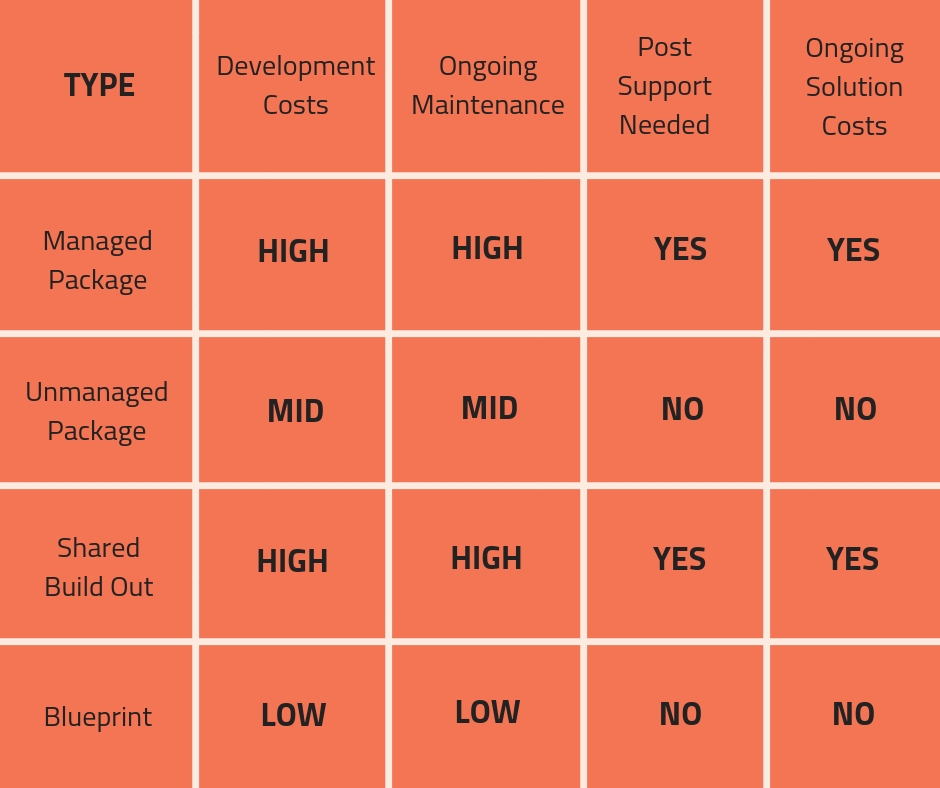Scaling for the Cloud: Fundamentals of Building a CRM Application
It is not uncommon for us to be approached by organizations with a request to build a “CRM Application”. Unlike a standard application that is facilitating a particular required function, the CRM Application is designed to scale a particular business process. Examples can include a selling process, program management, event management or any particular process that you wish to “franchise” across an industry.
You can read more about the concept of the CRM Application here.
The general goal of the CRM Application is to build something that:
1. Will scale process across multiple organizations, with Salesforce as the common language.
2. Provide global updates.
3. Be easy to maintain.
4. Be publically available.
As with all tech projects, the goal may be clear but the destination is not. An application, although a seemingly intuitive approach, may not be the best choice when considering time, budget and resources. There are essentially four roads to travel when considering scaling a business model to the cloud.
First, a managed package
This model is usually the starting point for most clients looking to impact a vertical. A fully developed application will allow you to have a presence on the Salesforce AppExchange, have a downloadable solution (ideally requiring minimal support), and global updates across everyone who downloads the solution.
The challenge with this model is that it can be an extensive effort to maintain. It requires staff to support app promotion along with proper case management and improvements to road mapping. In many cases, this commitment can be more than most organizations are willing or able to commit to.
The expense is great here but it is also money well spent if you are building a commercial application that you wish to impact a sector. An example of a managed CRM application would be Member Nation.
Second, an unmanaged package
This model is the lite version of the managed package. Essentially it is a fully developed application but it is often not published on the Salesforce AppExchange. Moreover, when the user downloads the app it will not be affected by global updates. Any customization beyond the initial download is up to the user.
The challenge of this model is that since global updates are not possible it is up to the user to maintain the continuity of the app. Without a presence on the AppExchange, the application will only find its way into the hands of those who are offered the solution directly by the designer.
The expense is much smaller here because of the limited need to maintain. It is for this reason that an unmanaged package is utilized by small communities (or franchises) that wish to develop a fundamental process but not an entire product. An example of an unmanaged package can be referenced here.
Third, a shared build out
This model essentially is a shared build out within a Salesforce instance shared across multiple users. This model, although the most simple to deploy, is often the more challenging to manage. By having a number of different companies working out of the same org, user profiles must be managed very efficiently. More importantly, business processes can’t vary too excessively from one organization to the next.
Finally, the blueprint
This model is likely the most tenured of the four mentioned so far. Much like the single build-out, it is not shared. The configuration is captured, like a blueprint, in a configuration booklet or something similar that can be shared among peers. This model gives an organization a fundamental idea of the general best practices but ultimately puts the responsibility in the hands of the consultant to build out.
One disadvantage with the blueprint is that it is only a blueprint (or a suggestion) as to how to build out the CRM Application. Very little control is available toward maintaining the continuity between each build out.

So which approach to a CRM application is the right for you?
That question is best facilitated with a discussion about your needs and processes with one of our consultants. Feel free to reach out directly with questions and we will be happy to help.







